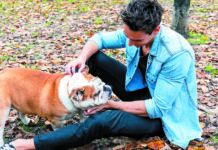o learn a little more about how a veterinary technician (veterinary nurse) carries out her responsibilities, we sat down with vet tech Gail Berthiaume, who works at Tufts’ Foster Hospital for Small Animals.
Your Dog: Are you a general veterinary technician, or do you have a specialty?
Ms. Berthiaume: I work only in the surgery suite. The way it works is that in smaller practices, vet techs do a little of everything — anesthesia, surgery, lab work, radiology. But in a large hospital like ours, the work is more departmentalized. And in a referral hospital like the one here at Tufts, which is also a teaching hospital, we do many things in each department that wouldn’t necessarily be done in a neighborhood veterinary clinic. For instance, we perform total hip replacement in dogs.
Your Dog: What makes that different from the vet tech’s point of view?
Ms. Berthiaume: The big thing is that for a surgery like that, Tufts has two vet techs in the room, not one.
Your Dog: Why the need for a second veterinary nurse?
Ms. Berthiaume: One vet tech actually scrubs into the surgery and maintains all the instruments as well as the equipment on the table. It’s just like you see on television. The veterinary surgeon says, ‘Scalpel,’ and we hand it to him or her. But because this is a complicated procedure, another tech’s responsibility is essentially to stand by should the plan change during the operation. Maybe the surgeon starts out thinking she’ll use a non-cemented stem for the new hip and realizes as she’s going along that a cemented stem would work better. The second tech will get that for the doctor.
Your Dog: Is there anything else a vet tech in the OR (operating room) does besides hand the surgeon the instruments?
Ms. Berthiaume: Absolutely. She has to prep the animal, clipping his fur and cleaning the pet with antibacterial scrub and alcohol. She also moves the patient into the OR and opens up the operating table in a way that keeps it sterile. Sterility is your main reason for a vet tech in the operating room.
Once the operation is over, the vet tech makes sure the suture site is clean, and then she moves the patient out to recovery. Here, students often get involved because Tufts is a teaching institution. So a vet tech may be showing a veterinary student some of the ropes.
Your Dog: Do you do anything else at Tufts besides work in the OR?
Ms. Berthiaume: I have been a vet tech at Tufts since 1987; I’m now in a supervisory role. That means that in addition to hands-on work, I have administrative responsibilities. I work on the budget, instrument and equipment repairs, and troubleshooting whatever problems come up. It’s very interesting work.
Your Dog: How did you get involved in this field?
Ms. Berthiaume: I started in private practice. I worked as a veterinary assistant at a local animal hospital further west in Massachusetts. I didn’t have a degree yet, but I was learning how to do things. Then I went to school to be a vet tech and sat for the exam.
Somebody told me Tufts was looking for an emergency room technician, but I declined that because I didn’t want to stay overnight in the hospital, which a number of our vet techs do. That insures that critically ill patients are monitored 24 hours a day. Then Tufts called me when a surgery position opened up, and I’ve been here ever since.
Your Dog: But how did you get involved in working in a veterinary practice to begin with?
Ms. Berthiaume: I can’t see myself doing anything else. I knew even as a girl that I wanted to work with animals. I don’t know if it happens that way for everybody, but that’s how it happened for me.




